Written by Rochelle Odell for the RSDSA blog.
NIB, Narrative Inquiry in Bioethics published in Narrative Inquiry in Bioethics • Volume 8 • Number 3 • Winter 2018
I suffer from Complex Regional Pain Syndrome (CRPS), one of the most painful and difficult diseases to treat. Toss in fibromyalgia, multiple spinal problems and osteoarthritis for good measure and you quickly see pain was the center of my life.
2016 proved to be the year of marked change for me. In January my then CVS pharmacist informed me he would no longer be able to fill my Dilaudid prescription. He kept telling me ‘something’ was coming down the pike. It was the CDC 2016 Opioid Guidelines.
Granted, 900–4 mg tablets is a large dose but I had been on that dose for 16 stable years, along with Diazepam, Norco, Flurazepam, Robaxin and Lidocaine. All these meds were prescribed every month—no I did not have any problems. I was actually functioning, something I haven’t done since December 2016, when the rest were stopped cold turkey, including Diazepam, a drug I had been on for over 20 years. It’s a wonder I didn’t die when the Diazepam was stopped. I was terrified I might. I was 69 at the time and should have been weaned off in a safe manner.
The Dilaudid was stopped in March of 2016 because my pain management MD didn’t like the fact he had to go over my whole history every month with my Medicare advantage insurance mail order pharmacy I had to switch to. That was sheer hell. I never forgave that man. The rest were stopped in December 2016 to give my body a break, a break I was not ready to take. But my story is not unique, it’s happening to countless other chronic pain patients.
I no longer functioned, quit driving and quickly remembered what a 10 on a 1–10 pain scale really was. I was in a fog, my ears began ringing incessantly, and all four senses were affected. It feels as if a mega-watt TENS unit is on top of my head, jolting me with electricity non-stop. The contractures from the CRPS have caused my right hand to clamp down completely. I lost the use of my dominant hand. The left hand now wants to follow suit. The saddest part is I am alone, I have no help. Physicians put me on all these drugs and they stopped them with no valid reason given. I do not trust any MD anymore.
My pain journey began after a workers’ compensation knee injury and plantar fasciitis. By 1992 physical therapy no longer helped, nor did special shoes and inserts, so I underwent a 2nd right knee arthroscopy and the orthopedist was supposed to remove a painful heel spur that developed. Immediately post-op I knew something was wrong. The pain in my left foot was excruciating and felt like it was on fire. The doctor kept telling me it would get better… it never did.
I returned to California, as I had left an excellent career in aerospace to work towards my dream of becoming a nurse and had moved to Georgia to work in a hospital and return to school at age 46. My California workers’ compensation physician sent me to a specialist. He took one look at my swollen and very red foot, asked me to describe the pain and quickly diagnosed me with Reflex Sympathetic Dystrophy (RSD). He failed to tell me what it was and I only found one paragraph at the library about Causalgia, the name given this disease by the civil war physician who named it. It was changed from RSD in the mid 1990’s to CRPS.
In spite of the painful foot, I continued on my journey to become a nurse, became an ICU Nurse Tech, and again returned to school. I loved my job and had finally found my niche in life. I couldn’t wait to become a nurse, no matter how long that took. Two years later the CRPS took my job and my dream away from me. I was devastated. Not depressed—sad, yes, but more angry than anything.
I opted to wait 18 months before starting pain management. However, the pain was localized to the left foot. I had to wait because it was a pre- existing condition and I let workers’ compensation buy me out so I could choose my own physician. I should never have started treatment. Once started, my disease began a rapid spread and in short order began to encompass my whole body.
My treatment started with lumbar sympathetic blocks. I was told if my pain was gone, it confirmed my diagnosis. The doctor explained what this monster really was. I went home after the block and cried as the pain was gone for six hours. Three more were performed before moving onto something else, as the results were short lived.
He started me on a cardiac med thought to help with nerve pain. All it did was cause my blood pressure to bottom out. He then prescribed an older tricyclite, which only served to upset my heart causing cardiac dysrhythmias. Hmm, what’s next? I then had two concurrent temporary epidural catheters implanted and they worked great. I could make those two small portable IV pumps do whatever I wanted. I received Marcaine and knew when to back off the doses. Working with two CADD pumps (i.e., a Computerized Ambulatory Delivery Device) and two IV bags of medication in my fanny pack proved to be challenging.
Eventually my lower catheter became infected. I was admitted to the hospital on an emergent basis. Both catheters were turned off and I was started on IV antibiotics. I was scheduled the next morning to have both catheters removed. However, within six hours of being admitted, the pain was excruciating and I had to be moved to a private room due to screaming. He reluctantly turned the upper catheter back on and within a short time, peace was at hand. I spent ten days in the hospital and was cautioned to watch for the same symptoms.
Within five days I had back pain and a temp. Again I was admitted and the remaining catheter was removed. It broke in half when the doctor pulled it out, requiring more surgery to clean out the now infected catheter tunnel. Ten more days of IV antibiotic therapy and then I was placed on Vicoden ES and Diazepam for pain and anxiety.
I was asked to seek psychological therapy to help me deal with ever increasing and spreading pain. I had an excellent rapport with the psychiatrist but we spent little time on how this disease was affecting me. He tried me on three different SSRI’s that only served to add pounds or a variety of side effects. After a few months he cut me loose. Seeing him was having little effect, and I was starting to dread any new drug added.
Because the epidural catheters were successful, my first spinal cord stimulation (SCS), a type of neurostimulation therapy that is effective for some chronic pain patients, was implanted. It was a self- contained unit that worked very well. I ran it on high for 15 months before hearing the subtle beep that it was dying. My doctor said it shouldn’t die this soon—what was I doing, running it on high? Yes, was my reply, nonstop 24 hours a day. I wanted to achieve max pain relief.
It was removed and my second SCS was implanted. It never worked as well as my first. By then the RSD had begun. The second SCS was removed and a pain pump implanted. It also never worked and having something I could not control in my body did not thrill me. The pump ran out more than once and the withdrawal for just the few hours was not fun. It was eventually removed.
By then I had undergone Stellate Ganglion Blocks, Axillary and Intrascaline Blocks, all with short-lived results. My body was betraying me and not cooperating. I was also undergoing Bier Blocks to the left foot. Those are horrible and again the results short-lived. I even underwent Cryoanesthesia to the left foot where the offending nerve was frozen. My foot orthopedist assisted with this procedure. When he opened my left heel he discovered the physician in Georgia had cut into a branch of nerves in the left foot and severed the nerve rather than removing the heel spur. He never told me. Now we knew why the CRPS was triggered.
The cryoanesthesia worked well, until I stubbed my toe. The fact I was facing even more procedures did not thrill me. Being put under anesthesia and waking up to more pain was not worth the ‘possible good outcome’ anticipated, coupled with the fact my body was developing allergies to more and more drugs. When will this nightmare end?
At that point my pain management physicians had left, and the new doctor assigned . . . he and I were like oil and water. That was my first taste of dealing with a physician who had a differing view on opioid prescribing. I began seeing another pain management physician. It worked out well.
The third SCS was implanted and the results were excellent. I had pain relief from both shoulders to my fingers and from hips to toes. My elation was short-lived. At week three post op, redness developed around the surgical site. I was admit- ted. For ten days I laid in the hospital bed with increasing pain.
Because of my history with implants and infectious disease, I wanted everything removed if a problem was found. Necrosis had developed in the pocket made to hold the SCS and the decision to remove the whole system was made.
If anything could go wrong, it usually did. Please God why is this happening to me? I had multiple drug allergies to both antibiotics, some opioids, and other medications. Why has my body forsaken me?
I began seeing a physician who was both my primary and pain management physician. It worked out until he moved 3 years later. My Dilaudid was increased and the other medications started. He confirmed my diagnosis of fibromyalgia.
My right hand began severe contractures and I underwent two manual manipulations. I began developing staph and MRSA infections in my right hand. I had temporary brachial plexus catheters for post-op hand surgeries. One worked so well
I could make my whole right arm numb and turn the Marcaine off two hours before I had to drive or do any kind of activity that required both hands.
I also underwent local blocks to the left heel, and later trigger point injections for headaches caused by the fibromyalgia. Two of my cervical disks are dissolving and my spinal pain has gone from bad to worse. I have had excellent pain management physicians. I would only change if they left the facility—doctor shopping is not fun. It’s stressful. The doctors I have need to prove themselves to me. I pay them—not the other way around. If they don’t like my attitude, I move on. It’s better than being in a poor patient-physician relationship.
Everything that can be done to treat the CRPS has been done. All the implants had to be removed for reasons beyond my control. The only thing that helped was opioid pain medication, along with other meds. My pain was never completely gone, but it was controlled. After undergoing more than
40 procedures, a medication regimen seemed to be the best solution.
What am I supposed to do now? Finding a physician to bring me back to the level I had been on will never happen. I had no desire to go to the streets for drugs either. I can’t afford it, nor would I risk my health by getting something other than what I thought I was getting. My health was already at risk when undergoing good pain management. And with my good luck being non-existent, I would probably get caught and thrown in jail.
What are pain patients like myself supposed to do now?

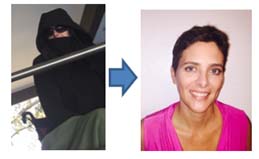 Written by Kristi Oen, CRPS Conqueror, Founder of P.A.I.N. Help, Vice President of the Naples Holistic Chamber of Commerce
Written by Kristi Oen, CRPS Conqueror, Founder of P.A.I.N. Help, Vice President of the Naples Holistic Chamber of Commerce By Carolyn McNoldy
By Carolyn McNoldy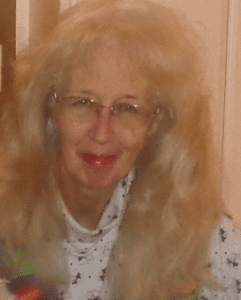 Written by
Written by 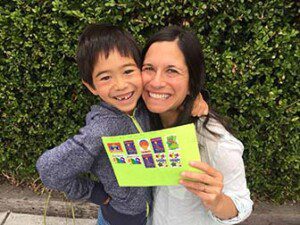 Written by Julie Robbins, OTR/L for the RSDSA blog.
Written by Julie Robbins, OTR/L for the RSDSA blog.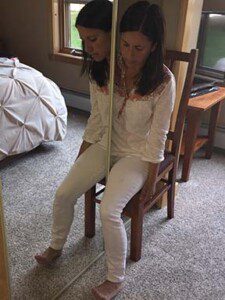
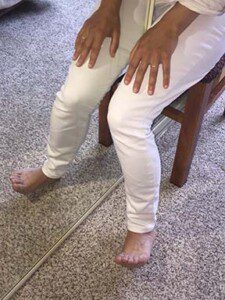
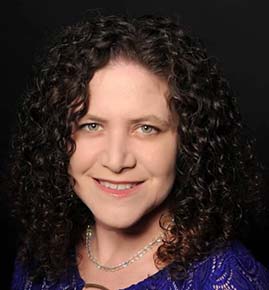 By Elisa Friedlander
By Elisa Friedlander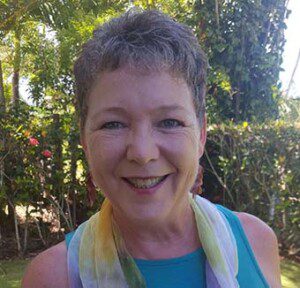 Jenny Picciotto is a writer and CRPS patient who enjoys reading and playing the piano. She was a yoga instructor and massage therapist before CRPS changed her trajectory. She currently lives in Hawaii, where she facilitates the Oahu CRPS Support Group. © Jennifer Picciotto 11-30-18. First published in National Pain Report.
Jenny Picciotto is a writer and CRPS patient who enjoys reading and playing the piano. She was a yoga instructor and massage therapist before CRPS changed her trajectory. She currently lives in Hawaii, where she facilitates the Oahu CRPS Support Group. © Jennifer Picciotto 11-30-18. First published in National Pain Report.